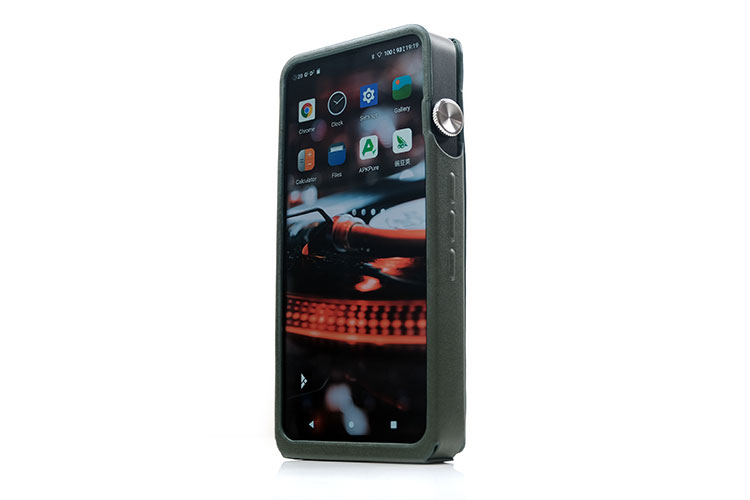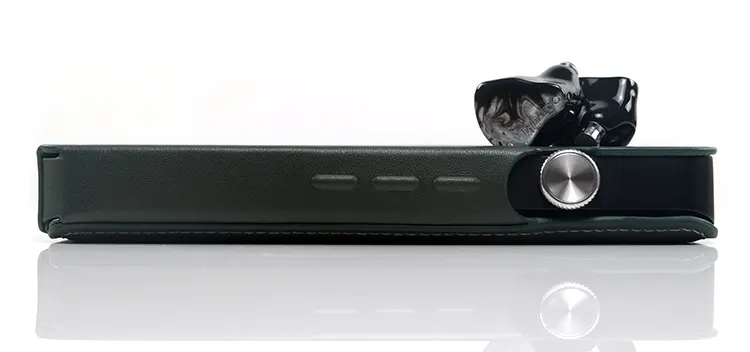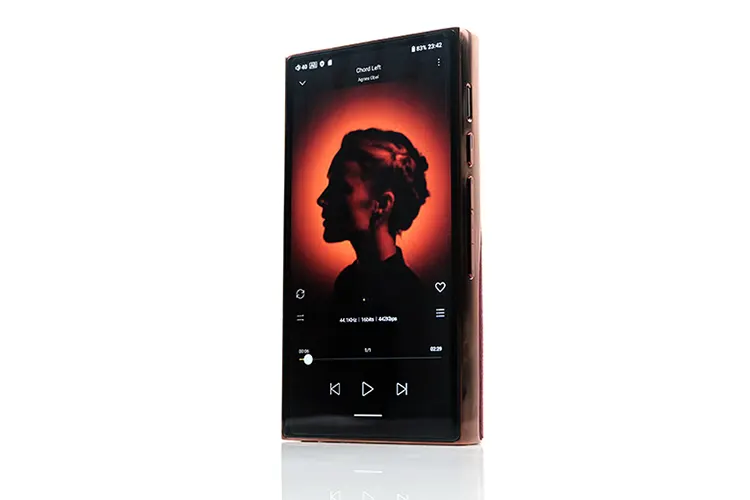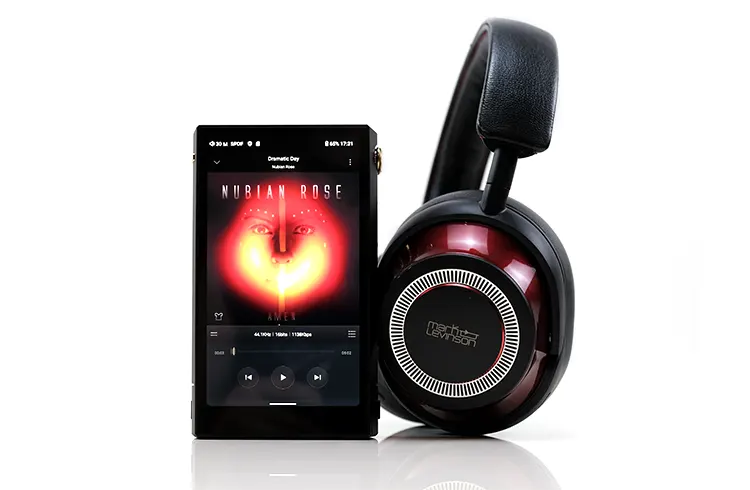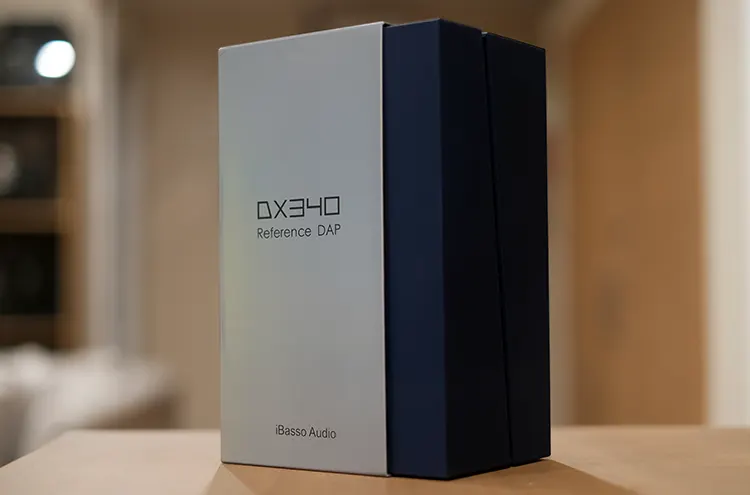Selected Comparisons
The following comparisons to the iBasso DX340 were completed using a mix of the PMG Audio Apx, Vision Ear’s VE10, and the UM Maven II Crescent.
iBasso DX320
The iBasso DX320 was launched in 2022, with my review published shortly after. The DX320 came with AMP11 MK2 S as its stock AMP card, and subsequent cards compatible with the DX340 include AMP12, 13, and 14.
We do not have the new brackets yet, so we cannot compare like-for-like player performance with the same cards. This comparison will compare stock for stock (AMP15).
Technical
Having considered a lot of key differences already in this review, I will keep this part fairly condensed. In short, the DX340 has a faster CPU, a more robust 8GB of RAM, enhanced onboard storage, and a more secure Android 13 operation platform.
Both devices still dual-boot into Mango OS for a pure audio experience, but the switch to the in-house 1-BIT discrete DAC and FPGA-Master 3.0 allows iBasso to craft new features that permeate throughout both OS architectures.
Options such as Dark Mode, Harmonic controls, and a more granular approach to gain levels combined with the new DC12V battery bypass feature are tweaks that are more tangible than the off-the-shelf ROHM DAC digital filters and smartphone-like appearance of the DX320 platform.
However, there are shared digital traits, including decoding up to 32bit/768kHz PCM, native DSD512 via USB, and wireless LDAC transmission with BIT for BIT system-wide playback architecture.
Both devices also use a dual battery system with a 4000 mAh 3.8V lithium-ion polymer battery for the digital side, a 2000 mAh version for analog in the DX320, and 2100 mAh for the DX340.
The key difference between the two power supplies is the DX340 DC12V battery bypass via the AMP cards.
That DC12V is a difference maker when talking about AMP card performance. Both stock cards, AMP15 and AMP11 MK2 S, can deliver up to 1.2W balanced into a 32Ω; however, with DC-IN, AMP15 can deliver almost double on the same load at 2150mW.
Design
I quite liked the smartphone design of the DX320. It feels familiar, and compared to the bulkier DX340, it’s a lighter proposition and easier to work with one hand.
However, there is no doubt the DX340 screams premium when sat beside the older model. From the choice of stainless steel, angular side panel, higher grade AMOLED screen, and vastly improved multifunctional dial, it looks more elegant and expensive.
Both devices will use the screw system for amp detachment, however, the DX340’s flush positioning makes it a lot easier to access and change.
Still, I would have liked to have seen iBasso do away with this system and use a self-release latch system similar to the N6iii. As mentioned, this is a slightly missed opportunity.
Moving the memory card slot to the top panel seems to be a popular move from all DAP makers. It makes everything simpler to access without having to remove the DAP from its leather case frequently, an issue that DX320 users will be all too familiar with.
The user changeable battery feature is another plus for the DX340. The detachable rear panel system makes it relatively easy to access its battery packs. It’s not that you cannot change the DX320 battery, but rather its far more convoluted with hairdryers for glue softening and suction cups.
Amp cards are interchangeable, but you will need a new bracket for the older cards that came with the DX320 to fit them neatly into the DX340.
Performance
There are use cases where one player or the other, with their stock amp, can achieve the greatest synergy.
For example, the AMP15/DX340 combo is superior for vocal performances with an improved harmonic balance and smoother, fuller-sounding timbre.
It sounds very natural with the PMG Audio Apx and the Maven II with a slight attenuation in treble amplitude to give it a more forgiving, rounded tuning for most mids performances.
With the PMG Audio Apx and the Maven II, the DX320/AMP11 MK2 S sounds edgy, cooler, and less coherent in the upper mids. Sibilance is more noticeable, and percussion strikes are steelier.
On the flipside, the warmer, bassier VE10 is a better match for the DX320 combo. It lacks a little contrast with the AMP15/DX340 combo, especially with harder-hitting EDM, which often requires a stronger level of bass and treble contrast to sound balanced.
The staging on the DX340/AMP15 pulls your ear down a little more to a denser sub-bass and smoother midrange bias. It sounds excellent with live productions with meatier bass guitar riffs and authoritative double-kick drum notes.
The DX320/AMP11 MK2 S pushes your ear up further to the mids and highs. It can sound brighter from the stronger treble overtones, though for overall depth and pleasing vocal presence, the MP15 has an edge for me.
In low gain for the DX340’s amp and DAC settings and low gain for the DX320 using the balanced output, I did not hear much, if any, background noise from either of the player’s stock AMP cards using my most sensitive pairing, the VE10.
HiBy R8II
The HiBy R8 II was launched at the tail end of 2023, with my review published in early 2024. The R8 II also won our Top Gear 2024 Award for Best DAP.
Technical
The headline pitch for both DAPs is their use of an in-house discrete engineered DAC.
The R8 II uses in-house custom-designed 16-way current mode delta-sigma-based decoder with DSD bypass and a 1024-tap cascaded FIR filter system labeled DARWIN-MPA or ‘Multiphase PWM Array’.
The DX340’s discrete DAC design has some similarities, such as using a PWM or Pulse Wave Modulation configuration in FIR Mode. In this case, it’s 128 precision resistors in 16 sets of 8E PWM cascades.
The key differentiator will be their respective FPGA algorithms, iBasso’s FPGA-Master 3.0 and HiBy’s Darwin architecture. For example, both offer Harmonic controls, but the final product feels quite different in purpose and application from the user perspective.
The R8 II technical has an edge for decoding at DSD1024 and PCM up to 32BIT/1536k over the DX340’s DSD512 32BIT/768kHz, but bear in mind that recordings at that level of resolution are quite limited in commercial availability.
Other internal aspects are closely matched, including a Snapdragon 665 SoC backed by 8GB of RAM and 256GB of onboard storage, but courtesy of ‘father time’ in some ways, the R8 II is using an older Android 12 platform as opposed to the DX340’s better-supported Android 13.
The R8 II uses a fixed transistor-based amplification with dual Class A and AB operational modes and a peak output power of 710 mW into a 32Ω load.
The DX340’s stock AMP15 will give you more at 1200mW on the load balanced, but to get operational mode choices, you need to buy AMP16.
You can increase voltage swings on the R8 II by 1.5V to ±7/5V with its Turbo mode, but it is not even close to the 12V lift from the DC-in and over 2W of output power from the DX340.
Design
I think these are two of the nicest looking DAPs on the market today. Granted, they are two of the biggest and heaviest DAPs since both use stainless steel, requiring two hands to operate them.
The R8 II has a darker mix of burgundy for an Alcantara-wrapped rear panel and a very polished and reflective dark carmine for the stainless steel body, and the DX340 has a much lighter tone with its brushed stainless steel silver hue and matte rear panel in gunmetal.
Both screens are similar in size at 5.9″ for the R8 II and 6″ for the DX340. However, the R8 uses a lower grade IPS panel, whereas the DX340 is equipped with AMOLED. Side by side, the DX340 is more saturated-looking with deeper blacks and a wider angle of view.
The R8 II rear panel is not as accessible, so it’s not classified as a user-replaceable battery. It has a much bigger battery at 10000mAh/3.8V, but it’s a single battery covering all aspects of the player rather than split between digital and analog.
Despite the size, the battery performance is not huge at 11-12 hours with the screen off and about 8 hours with turbo mode. The DX340 will vary depending on the AMP card, but perhaps 1-2 hours less on average with the stock card.
Bear in mind that there is no DC12V option to bypass the R8 II battery for prolonged use, meaning the general battery life cycle is shorter than the DX340 DC-In mode.
One final observation for I/O is the fixed nature of the R8 II ports. It offers dedicated SE and balanced LO, which AMP15 does not, but lacks a dedicated SPDIF on the top panel, preferring to work all digital through a single USB-C port.
Performance
For this comparison, I used the stock DX340/AMP15 combo and kept the R8 II Turbo mode off, followed by Turbo Mode compared to the DX340 with DC-In activated.
The R8 II Class AB mode has a drier, more energetic sound signature than the DX340/AMp15 combo. It’s also a little harder-edged, with a thinner male vocal presence compared to the fuller sound of the DX340.
It has excellent clarity, but that lower-pitched vocal presence did not sound as natural, perhaps too clinical. A good example is the lead track from Metallica’s 72 Seasons with the R8 II Class AB treatment diminishing the power and texture of Hetfield’s vocals, whereas the DX340/AMp15 combo sounded richer with more authority.
The R8 II Class A mode is much more competitive, but even here, I felt the lows lacked a bit of character with my tested IEMs. What I heard was perhaps too polished with less micro-detail in drum and bass guitar notes, nor did the R8 II reach as deep or sound as dynamic.
The DX340/AMP15 combo lows sound weightier, with better layering and micro-detail, creating more character in the bass note’s sustain. Perhaps not as tight as the R8 II delivery, but certainly a stronger fundamental frequency and more presence.
With Turbo Mode and DC-In turned on, neither messes with the general observations above for textured detail and general tonal qualities.
The DX340 still has a slightly smoother and juicier sound and better texture, and the R8 II is relatively polished sounding with a slightly shorter decay. With the voltage boost, everything good about each player gets amplified, particularly in the lows.
Just bear in mind that the R8 II Turbo Mode does not require a wall plug, which somewhat restricts the DX340’s mobility.
Cayin N6iii
The Cayin N6iii is the company’s latest digital audio player, with my review published a few weeks ago. It is the only media player in their DAP lineup that uses a modular-based architecture. I will use the N6iii/E203 card setup and load the DX340 with AMP16 for this comparison.
Technical
Like the DX340, the N6iii uses a swappable modular card system. However, unlike the DX340, the N6iii modular motherboards include the amp and the DAC.
That offers more possibilities but at a higher price per motherboard and is not backward-compatible with the older N6ii.
So right now, the choices are but 2, the C201 and the E203, with the DX340 compatible with 5 cards from AMP12 up to AMP16 (with the new soon-to-be-released bracket).
The player itself is a grade behind the DX340, IMHO. Despite using a similar 665 CPU and competitive AnTuTu scores, it’s an older Android 12 with 2GB less RAM and a much smaller and less legible 5″ 1080p screen with half of the DX340’s onboard storage at 128GB.
Both motherboards are delta-sigma chipsets rather than in-house designed with the C201 using 8 x CS43198 capable of decoding 32BIT/768kHz and native DSD512 via USB. You get a similar decoding level from the E203’s ES9038SPRO chipset.
You can draw some interesting parallels between AMP15/16 and the E203 and C201. For example, the C201 has a lineout similar to the AMP15, and the AMP16 has dual operational modes (Class/AB) with no lineout similar to the E203.
What is missing from the new Cayin motherboard lineup is tube amplification. Given the larger slot size, I would expect a Korg Nutube variant at some point rather than the AMP16 dual microtube solution.
The N6iii offers Hyper Mode (E203), similar to HiBy’s Turbo mode for voltage headroom, but has no DC-In input.
With Hyper Mode, you get up to 900mW into a 32Ω balance, which is a little bit less than the 1.2W rating of AMP15 on its battery. It is significantly lower than the DX340’s DC-In at 2.1W for AMP15 and 1.5W for AMP16.
Design
Out of all the compared DAPs, the N6iii is by far the most compact and pocketable. It is a good deal lighter at 350g compared to 486g (depending on the card in use. So long as your hands are not super tiny, it’s probably the easiest to operate single-handedly.
That is not to say the N6iii is super slim, it’s quite chunky and a little taller than the DX340. Still, the shorter length does mean your hands are not hitting the control buttons when picking it up, which is something that can still happen with the DX340 chassis.
Aesthetics? All DX340. It looks spectacular beside the more muted N6iii with its stainless steel finish and massive 6″ AMOLED screen as opposed to 5″ 1080p. The N6iii changes from the N6ii are more about functionality requirements than wow factor, IMHO.
This is about sizing up to fit the more powerful motherboards, giving Cayin more future-proof card options. It’s also about better control layout, such as moving power away from the dial and retaining volume controls only to avoid those accidental bumps during use.
Perhaps the biggest asset of the N6iii functional improvements is the self-releasing motherboard latch system. No more screws, just press and release making it super easy to change cards on the go. This is something I wish the DX340 had.
Battery life with the N6iii C201 is better at 12-14 hours, but you will get less with the E203 using Hyper Mode at just 6.5 hours.
Performance
In Class AB mode, the N6iii/E203 combo is denser and more centered sounding than the sweeter, airier performance of the AMP16/DX340.
There is also a dynamic range and imaging difference. The AMP16 offers more than the E203, with improved width and superior instrument and vocal separation, delivering a more immersive performance.
E203 has some excellent weight on the lows, more so than the AMP16 with the H1 original harmonic balance. Once you move H5 ‘All’, that gap closes with the AMP16 Class AB mode sounding almost as weighty but retaining better headroom and spacing.
E203’s Class A produces a more distinct sub-bass response, though still not as airy or as immersive as the AMP16 presentation. Vocal imaging from the E203 Class is also just a shade more recessed compared to Class AB AMP16.
You can thicken the AMP16 bass substantially with the Harmonic “All” setting, but the sub-bass thud with the Apx and VE10 is still more noticeable with E203’s Class A.
In Tube mode, the vocals from AMP16 are more vibrant and textured sounding. The E203 Class A mode is fulsome and smoother but more solid-state in its delivery, i.e., slightly polished and cleaner sounding.
AMP16 Tube mode has more staging height and width with improved staging depth over Class AB, but it is not quite as dense on the sub-bass compared to Class A from the E203/N6iii.
That observation is reinforced when turning on the E203 Hyper mode with a deeper and more aggressive set of lows, making the DX340/AMP16 Tube mode sound sweeter and more chilled in its delivery.
The E203 Hype Mode pales compared to the DC-in activated AMP16 mode. The uplift in dynamics and vibrancy is huge; everything sounds bigger and bolder, including bass weight, depth, and vocal bloom.
My Verdict
The iBasso DX340 takes everything great about the D16 Taipan and bottles it in a classy looking portable player, complete with two very highly capable yet distinct sounding AMP cards.
Yes, it is a heavy-duty device, much heavier and thicker than the older DX320, but to the discerning eye, it looks far more premium, with a stainless steel finish worthy of a flagship device.
It is perhaps unfair on iBasso to say that if this is the caliber of build and performance coming out right now, then watch out for any potential MAX version at a later stage because that could well be one heck of a beast.
Thankfully, iBasso did not go crazy on the pricing for the DAP and AMP cards, which is just as well, as most of the competition is pitching around the same price for their latest creations in 2025.
iBasso DX340 Technical Specifications
- Display: 6″ AMOLED
- Chassis: 316 Stainless Steel
- Audio Formats: APE, FLAC, WAV, WMA, ACC, ALAC, AIFF, OGG, MP3, DFF, DSF, DXD, DST
- Outputs:
- 4.4mm BAL Phone Out (Line Out)
- 3.5mm SE Phone Out (Line Out)
- 3.5mm Coaxial Output, USB OTG Output
- Storage: 8GB RAM + 256GB ROM, expandable up to 2TB via TF card
- Processor: Qualcomm Snapdragon 665
- Bluetooth: V5.0
- WiFi: 802.11b/g/n/ac (2.4Ghz/5Ghz)
- RAM+ROM: 8G RAM, 256G ROM
- Battery:
- 3.8V 4000mAh Li-Polymer battery (digital section)
- 3.8V 2100mAh Li-polymer battery (AMP card section)
- Battery Life: Approx. 11 hrs
- Charge Time: Approx. 2.5 hrs
- Dimensions: 6″ x 3″ x 0.74″
- Weight: 1 lb
AMP15 4.4mm BAL Headphone Out
- Output Level:
- 8.3 Vrms (12V DC-IN)
- 6.23 Vrms (Battery)
- Output Power:
- 2150mW + 2150mW @32Ω, THD+N: -119dB (12V DC-IN)
- 1200mW + 1200mW @ 32Ω, THD+N: <1% (Battery)
- Frequency Response: 10Hz-22kHz -0.7db
- SNR + Dynamic Range: 123dB
- THD+N: -119dB (A-wt, 600Ω), -117dB (A-wt, 300Ω), -106dB (A-wt, 32Ω)
- Crosstalk: -140dB
AMP15 3.5mm SE Headphone Out
- Output Level:
- 4.2 Vrms (12V DC-IN)
- 3.16 Vrms (Battery)
- Output Power:
- 550mW + 550mW @32Ω, THD< 1% (12V DC-IN)
- 312mW + 312mW @32Ω, THD< 1% (Battery)
- Frequency Response: 10Hz-22kHz: -0.7dB | 10Hz-40KHz: -2.2dB
- SNR + Dynamic Range: 123dB
- THD+N: -117dB (A-wt, 300Ω + 600Ω) -104dB (A-wt, 32Ω)
- Crosstalk: -138dB
AMP15 4.4mm BAL Line Out
- Output Level: 2Vrms
- Frequency Response: 10Hz-22kHz -0.7dB
- SNR + Dynamic Range: 123dB
- THD+N: -119dB
- Crosstalk: -145dB
AMP15 3.5mm SE Line Out
- Output Level: 1Vrms
- Frequency Response: 10Hz-22kHz: -0.7dB | 10Hz-40KHz -2.2dB
- SNR + Dynamic Range: 118dB
- THD+N: -110dB
- Crosstalk: -135dB
AMP16 Class AB Mode
- 4.4mm Balanced Output
- Output Level: Super Gain 8.3Vrms, High Gain 6.0Vrms
- Output Power: 2000mW + 2000mW @ 32Ω (12V DC-IN) 1000mW + 1000mW @ 32Ω (Battery)
- THD+N: -117dB (A-weighted, 300Ω load)
- SNR: 122dB
- Dynamic Range: 122dB
- Frequency Response: 10Hz – 40kHz ±0.5dB
- Crosstalk: -120dB
- 3.5mm Single-End Output
- Output Level: Super Gain 4.1Vrms, High Gain 3.0Vrms
- Output Power: 500mW + 500mW @ 32Ω (12V DC-IN) 260mW + 260mW @ 32Ω (Battery)
- THD+N: -108dB (A-weighted, 300Ω load)
- SNR: 120dB
- Dynamic Range: 120dB
- Frequency Response: 10Hz – 40kHz ±0.5dB
- Crosstalk: -117dB
AMP16 Tube Mode
- 4.4mm Balanced Output
- Output Level: Super Gain 7.5Vrms, High Gain 4.6Vrms
- Output Power: 1500mW + 1500mW @ 32Ω (12V DC-IN)
660mW + 660mW @ 32Ω (Battery) - Frequency Response: 20Hz – 40kHz ±1dB
- 3.5mm Single-End Output
- Output Level: Super Gain 3.75Vrms, High Gain 2.3Vrms
- Output Power: 400mW + 400mW @ 32Ω (12V DC-IN)
150mW + 150mW @ 32Ω (Battery) - Frequency Response: 20Hz – 40kHz ±1dB


